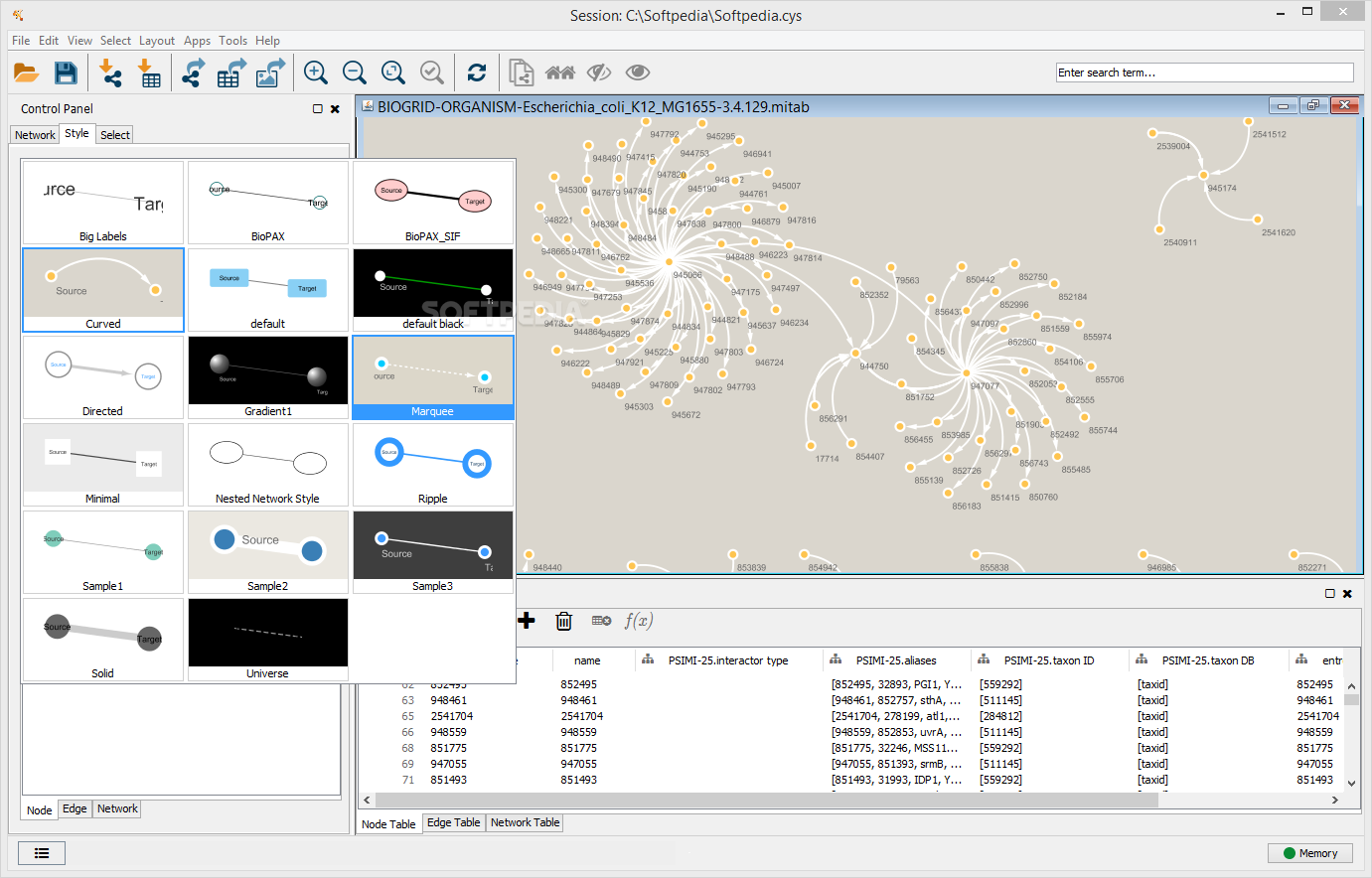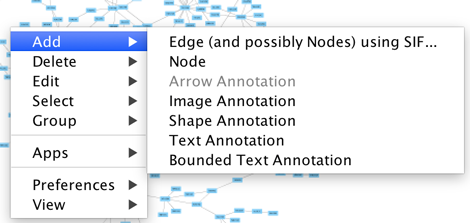

2.4 Continuous color mappingĬytoscape allows you to map attributes of the nodes and edges to See what the abbreviations for different evidence types mean here. Of 5? What source do these interactions come from? Hint: you can What compartments is ARID1A present in with a confidence

2.3 Inspect subcellular localization data Give an example for a node with the highest and lowest disease score. Use one of the icons in the menu to zoom into the selected node. The selected rows) and choosing the Select nodes from selected rows option. Highlight the corresponding nodes by selecting the rows in the table, bringing up the context menu (right-click.Sort it by values to see the highest and lowest disease scores. Find the disease score column in the node attributes table (look at the last columns).In theįollowing, we will explore these data using Cytoscape. ( Node Table) as well as the confidence scores for theĭifferent interaction evidences ( Edge Table). Sequence, tissue expression data, subcellular localization, disease score Information associated with the nodes and edges, such as the protein Note that the retrieved network contains a lot of additional Select the right one(s) you meant and continue by That the stringApp finds for each query term and selects the first Unless the name(s) you entered give unambiguous matches, aĭisambiguation dialog will be shown next. Click the 🔍 button to start the search.The default setting is 10, which we will keep for this example. Many interaction partners of your protein(s) of interest will be added to the network. Maximum number of interactors determines how.Make sure the appropriate organism is selected (e.g. Alternatively, use File → Import → Network from Public Databases. In the Network tab of the Contol Panel, select STRING protein query in the drop-down and type in a protein name, for example SORCS2.Molecular networks based on a protein, a small-molecule compound,Ī disease, and a topic in PubMed. In this exercise, we will perform some simple queries to retrieve Underlying data before working with them in these exercises. Provided by the Jensen lab to learn about the You go through the short STRING exercises If you are not already familiar with the STRING database, we highly recommend that Similarly, make sure you have the yFilesĬlusterMaker2 apps installed before closing the
#CYTOSCAPE 3.2 INSTALL#
The stringApp in the search field if it is notĪlready installed, select it and press the Installīutton to install it. Require you to have certain Cytoscape apps installed.
#CYTOSCAPE 3.2 UPDATE#
Them and update the current ones if necessarily.

To Apps → App Manager to check for new apps, install To follow the exercises, please make sure that you have the


 0 kommentar(er)
0 kommentar(er)
